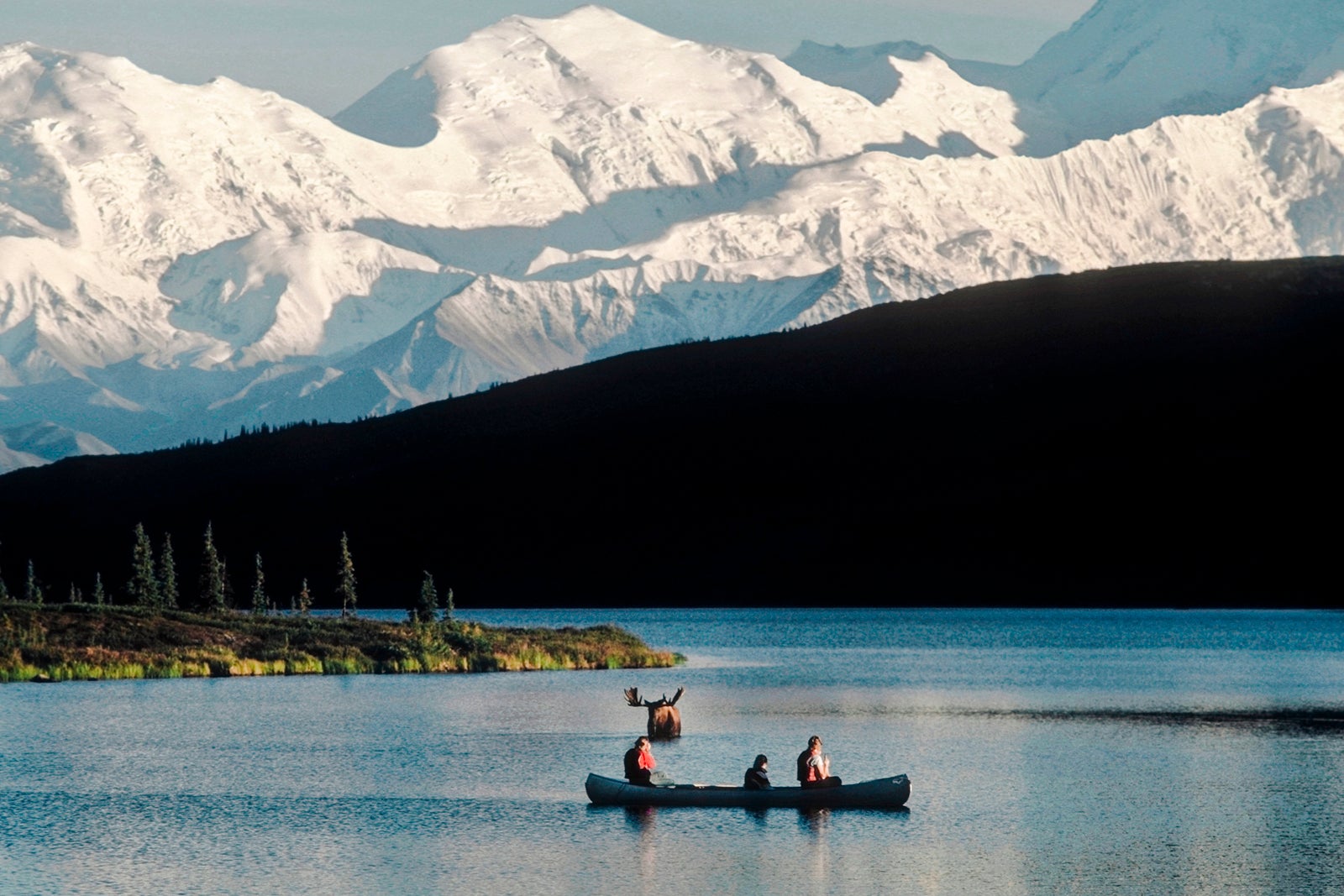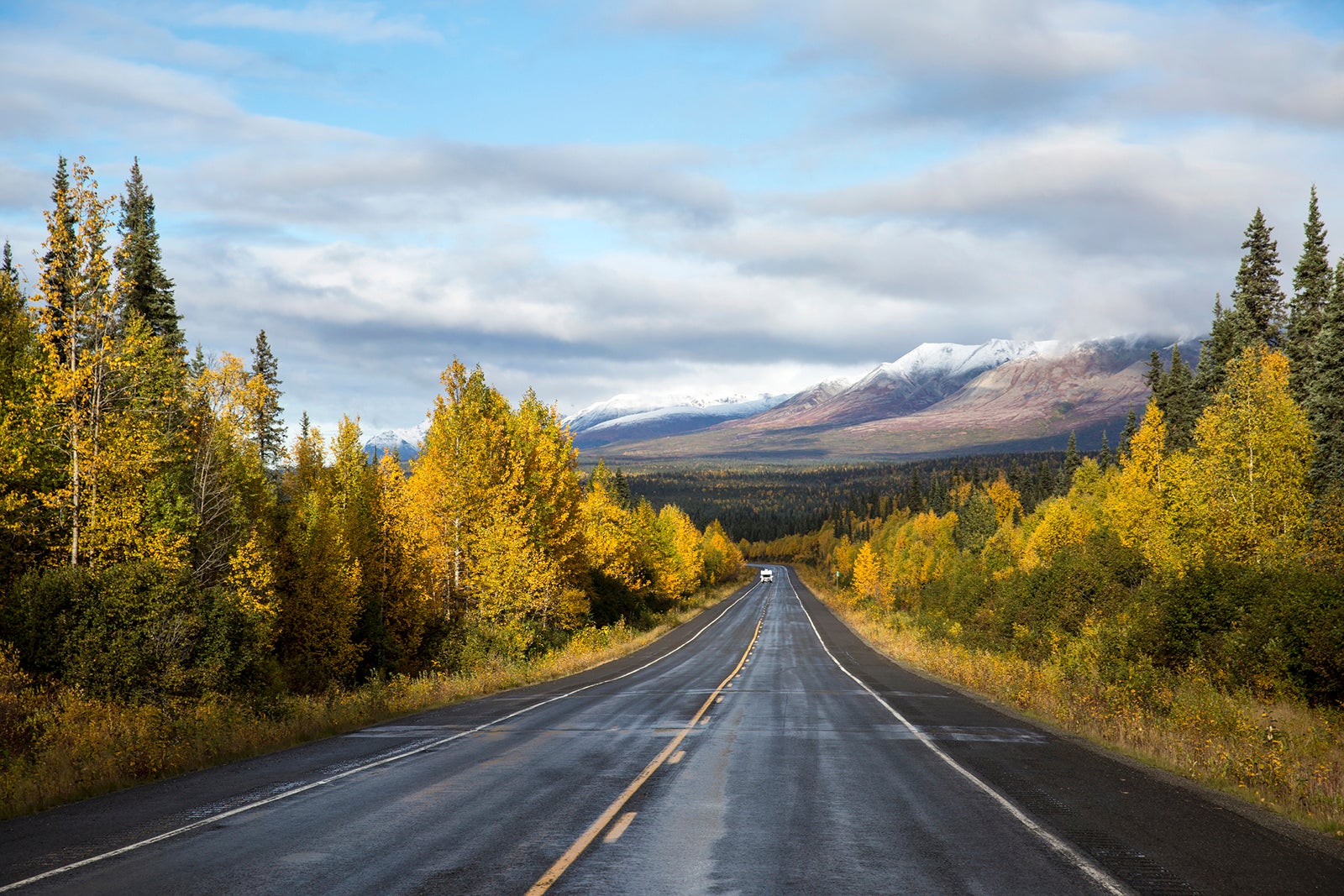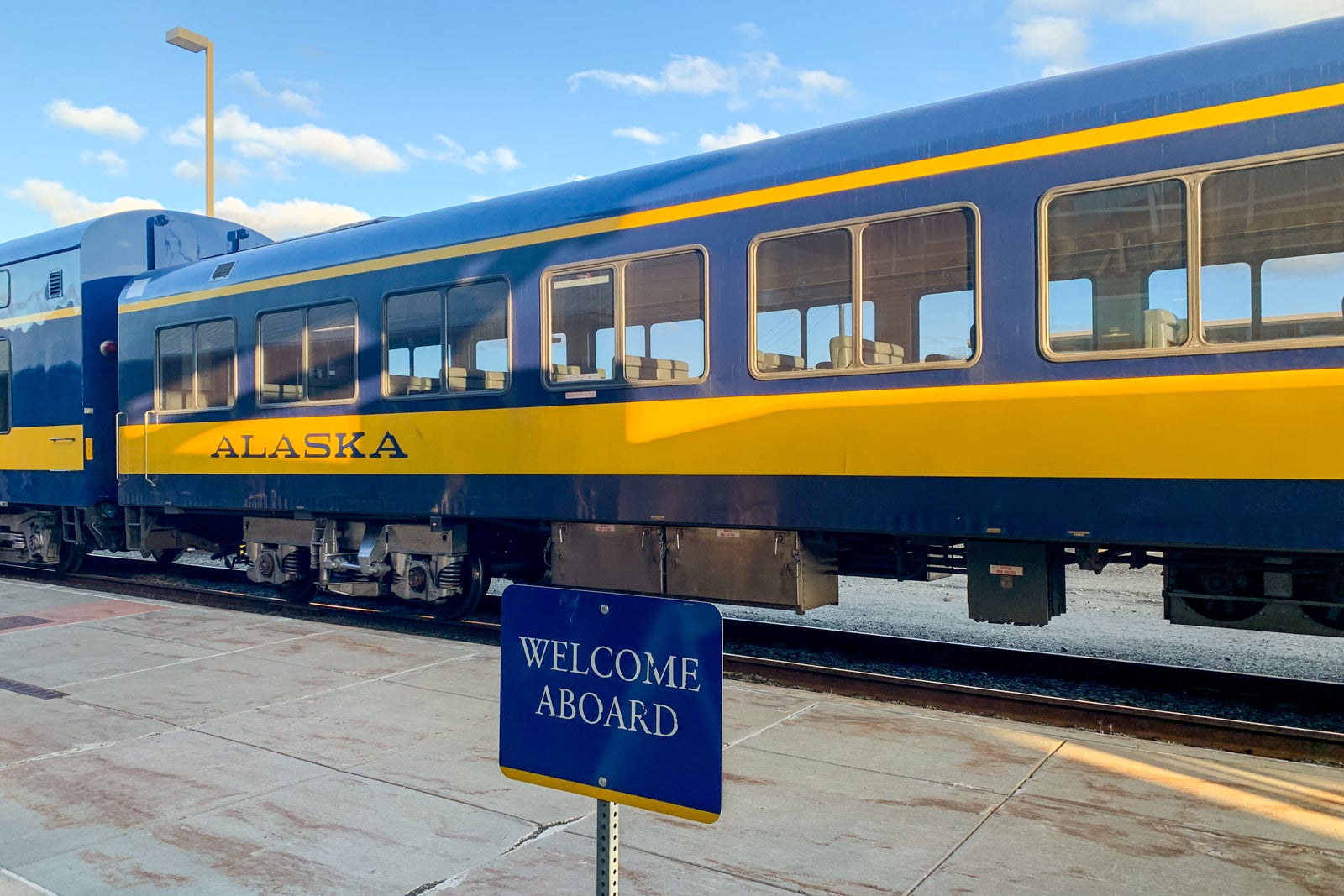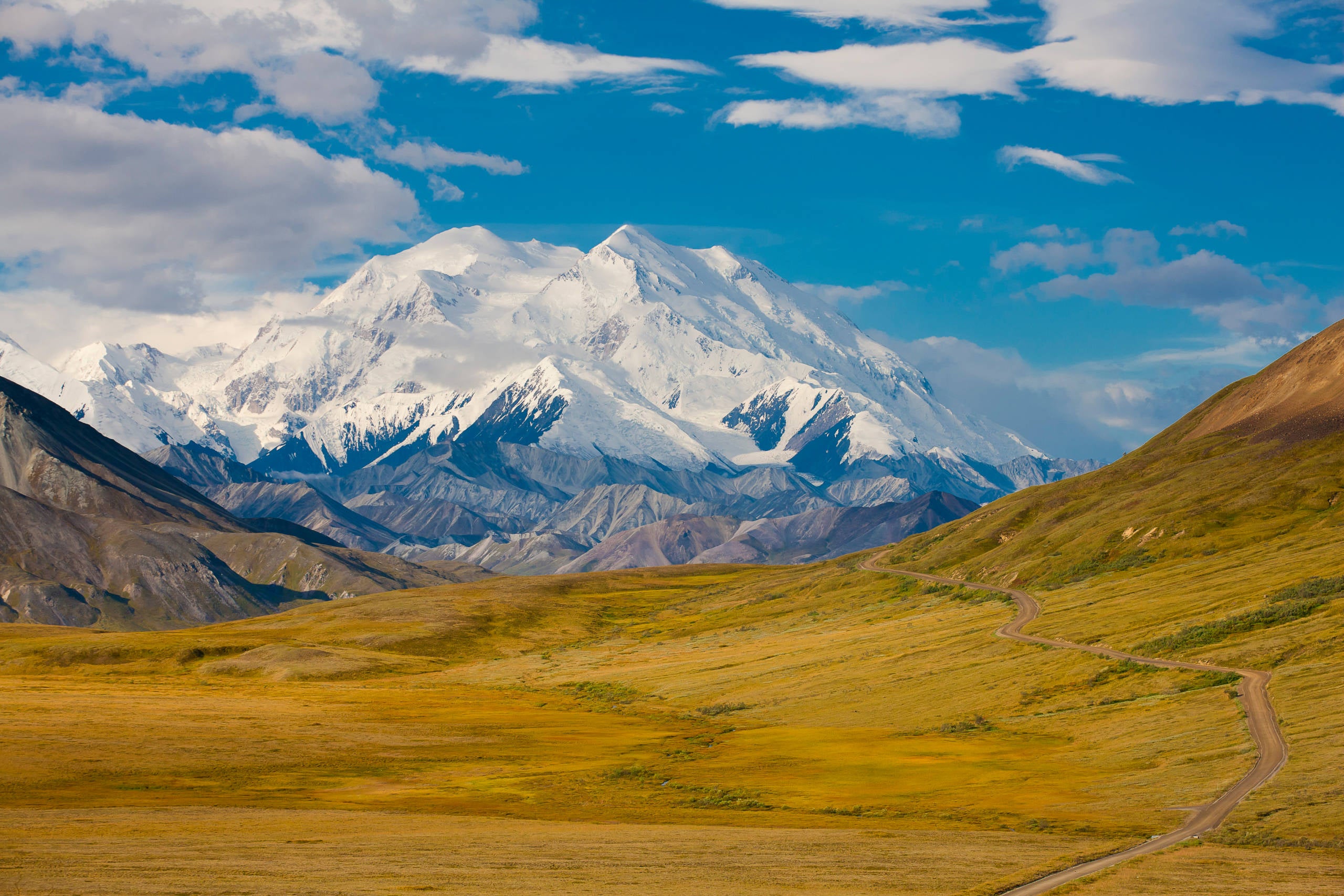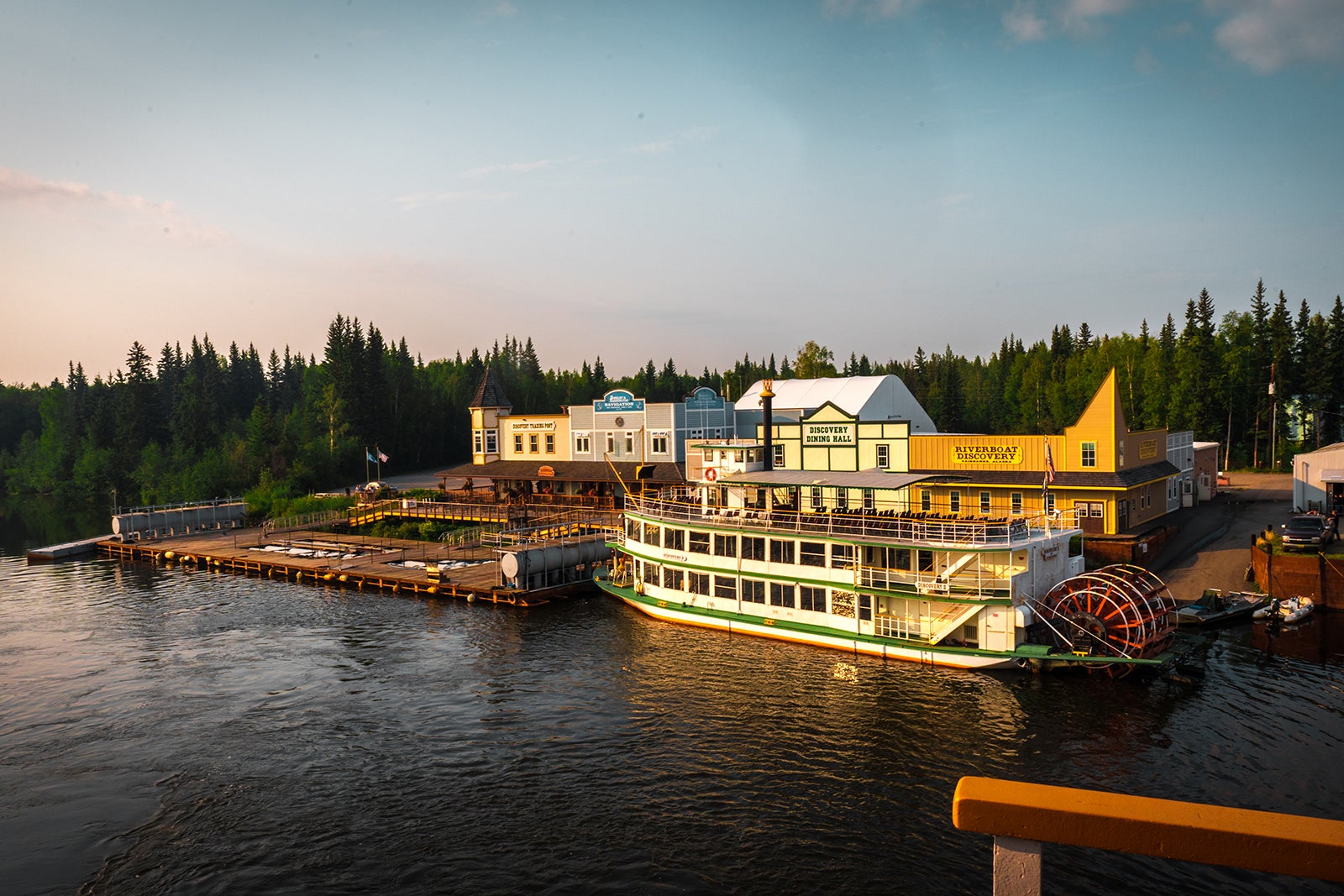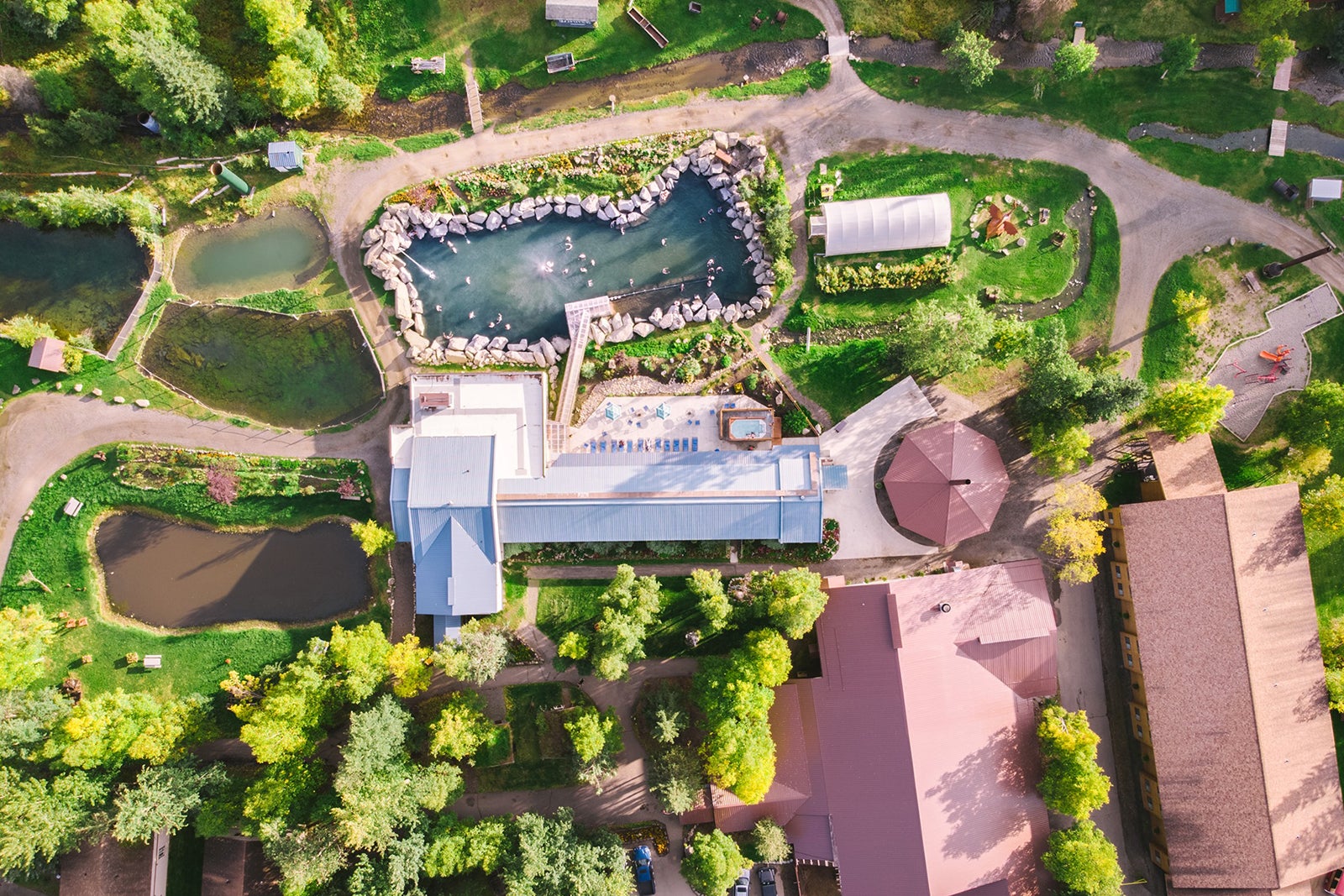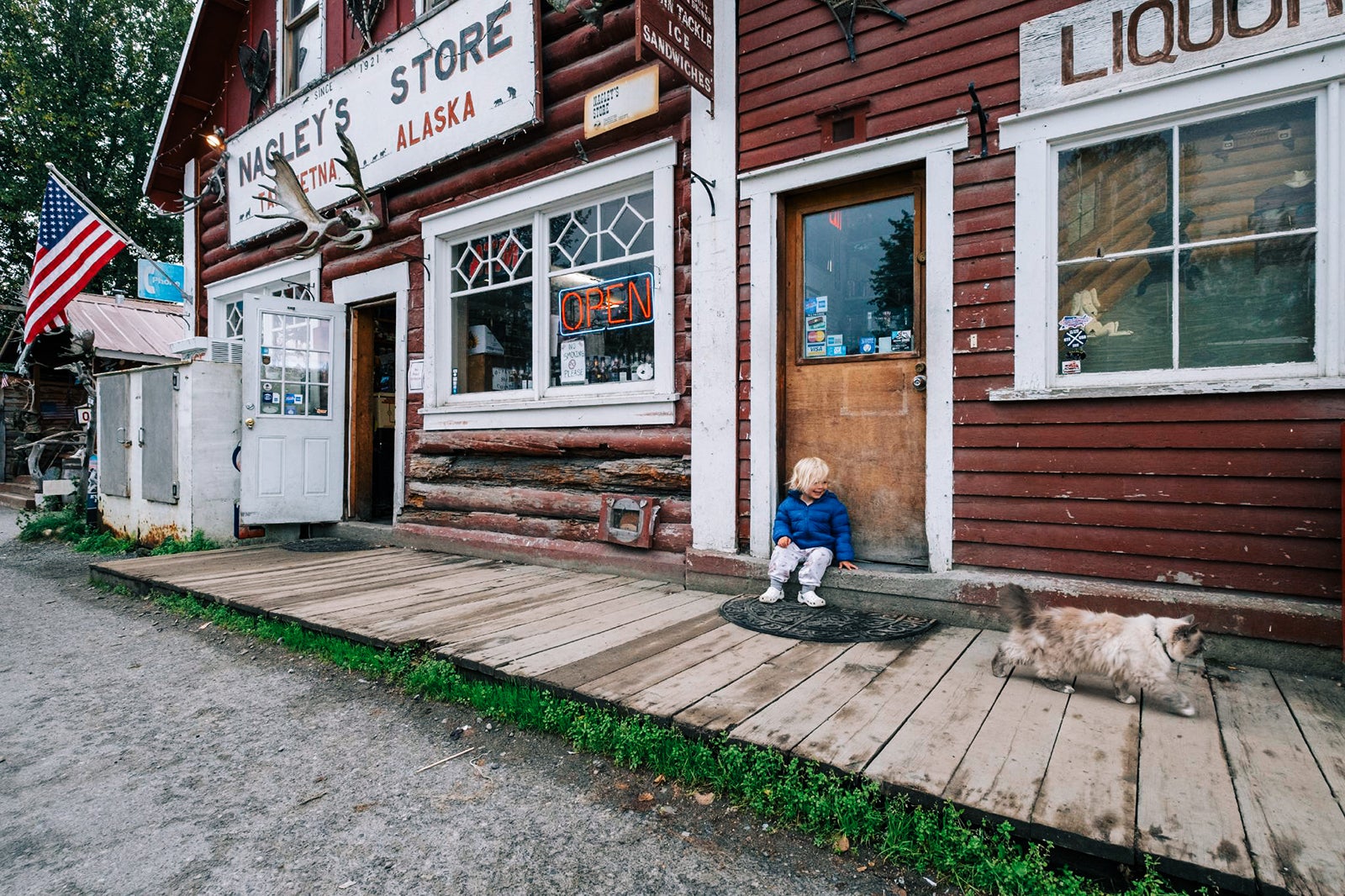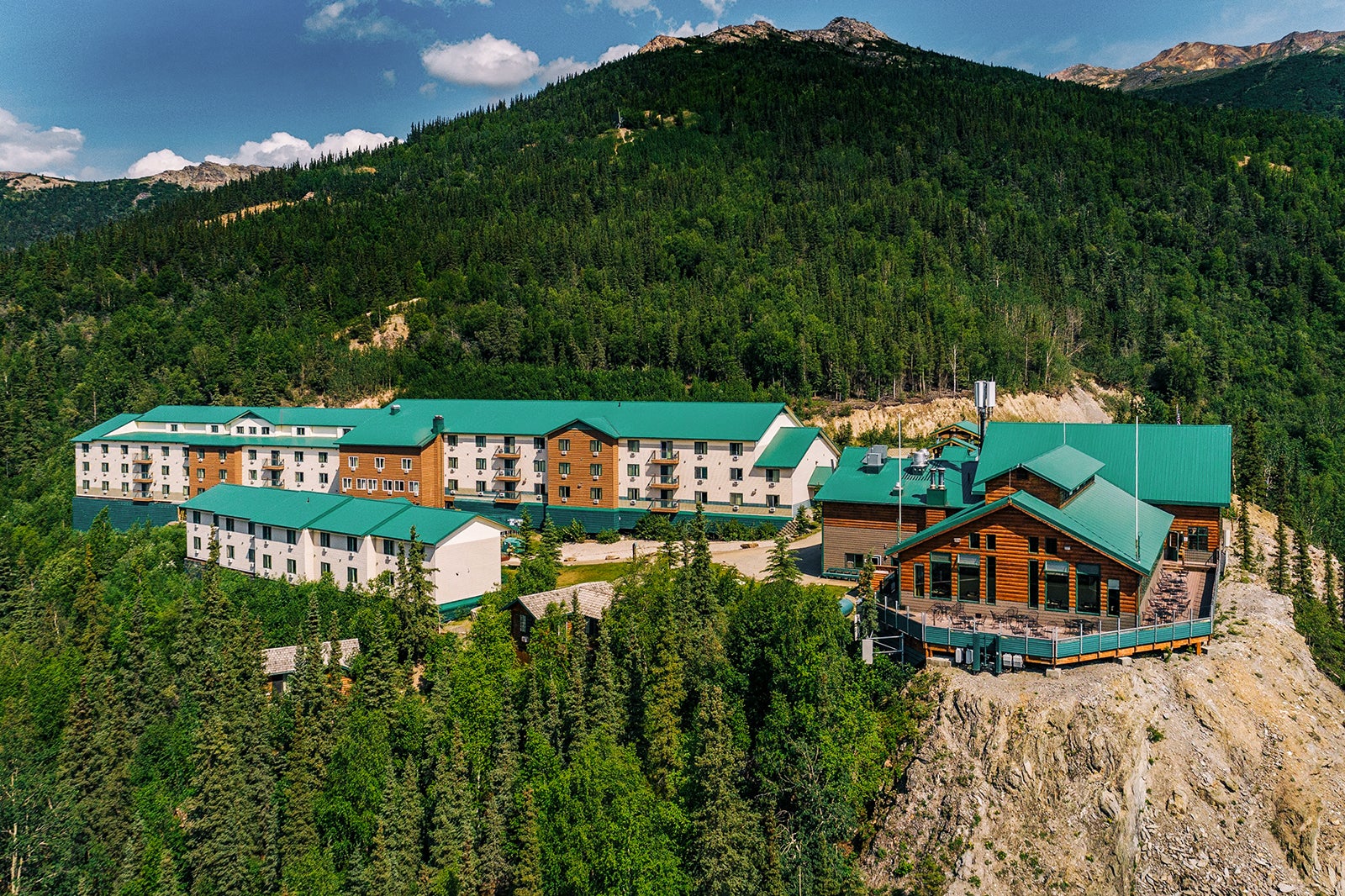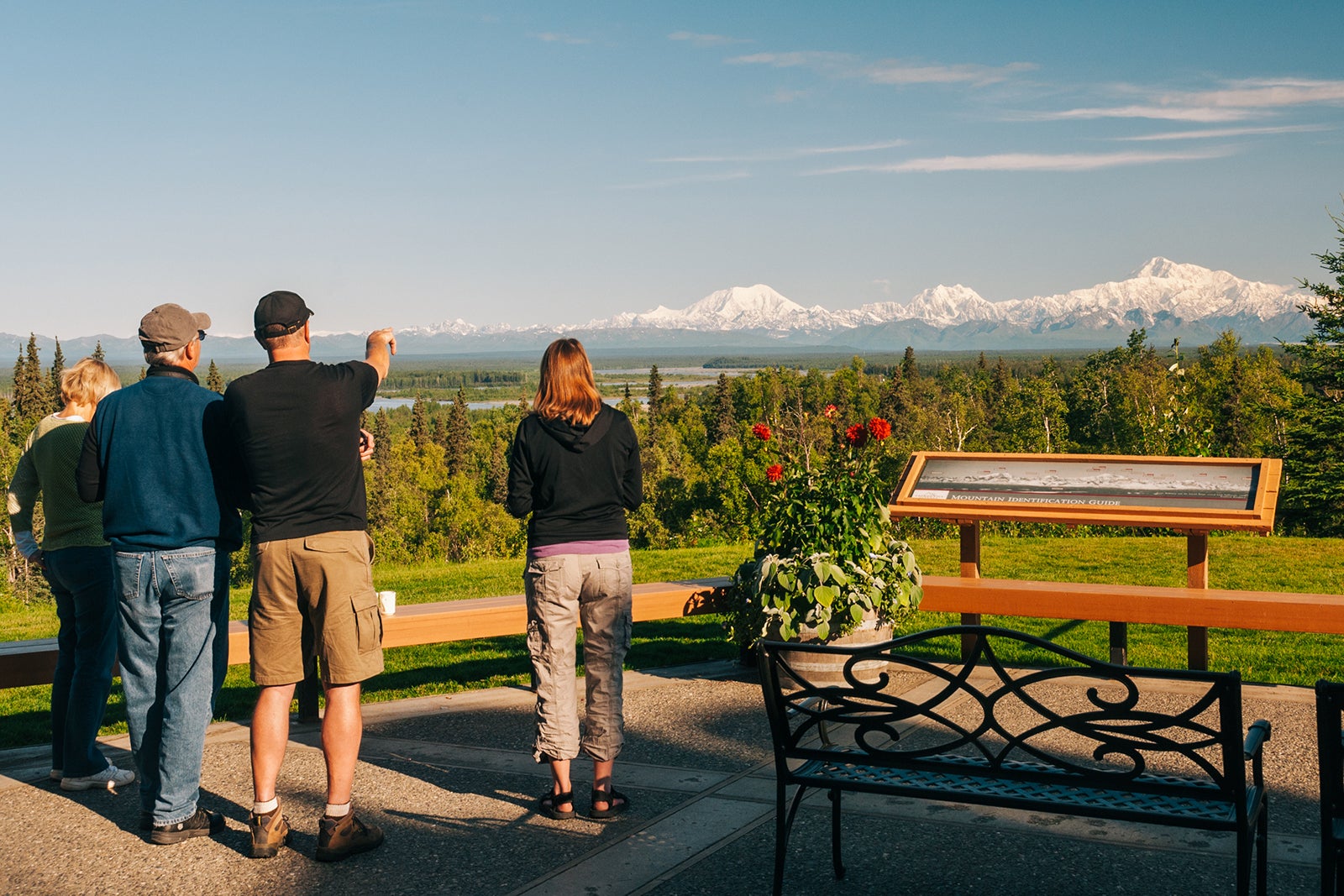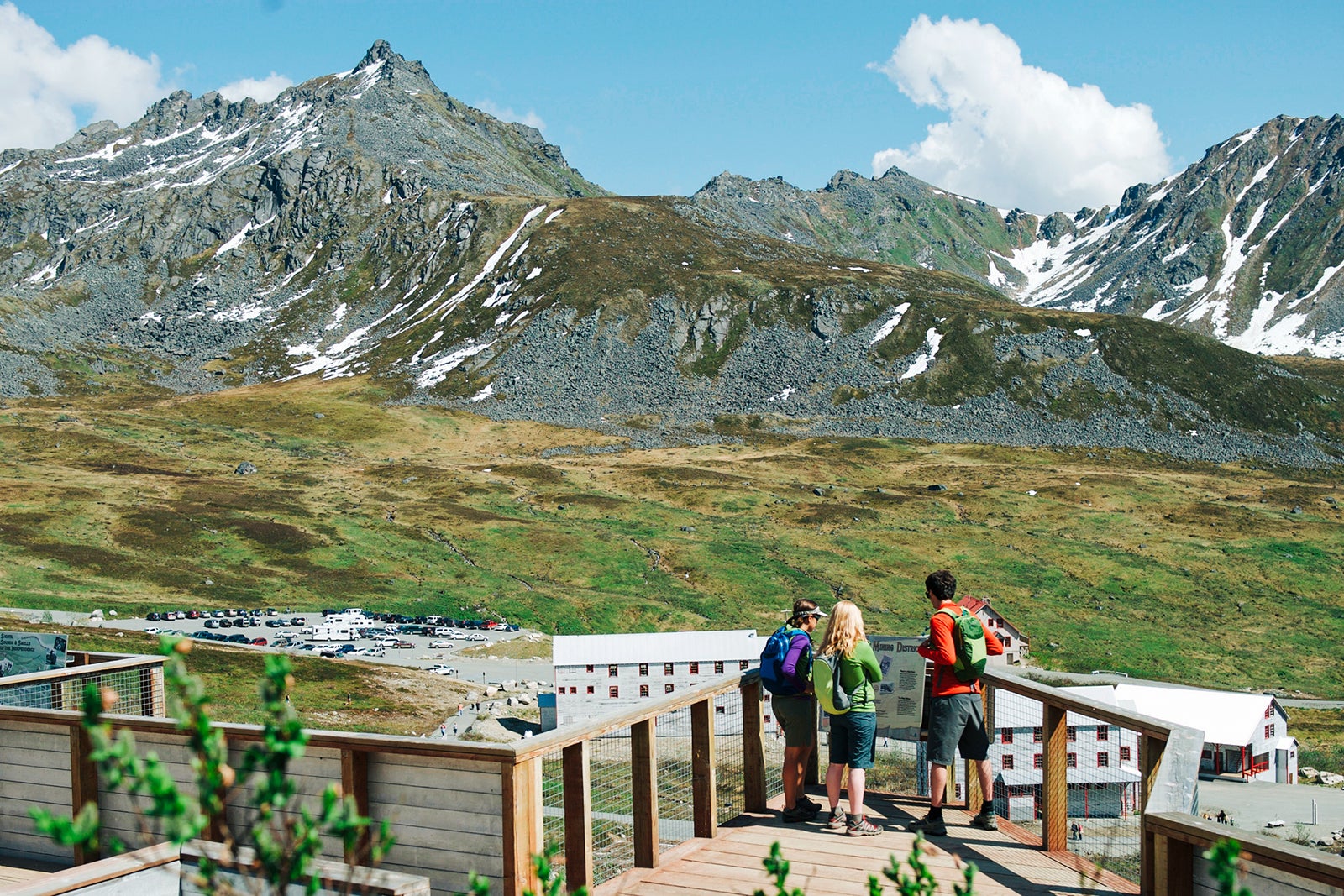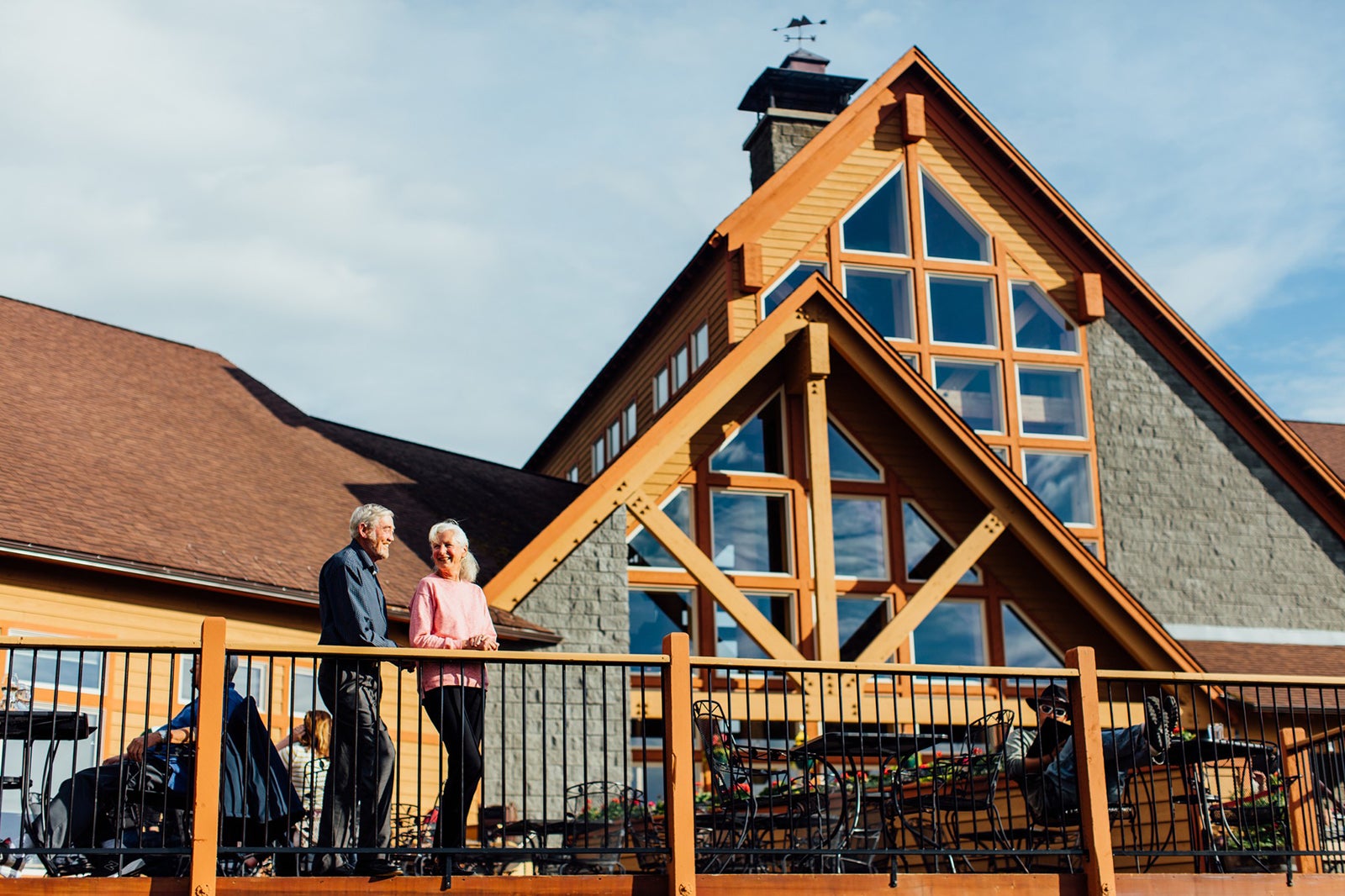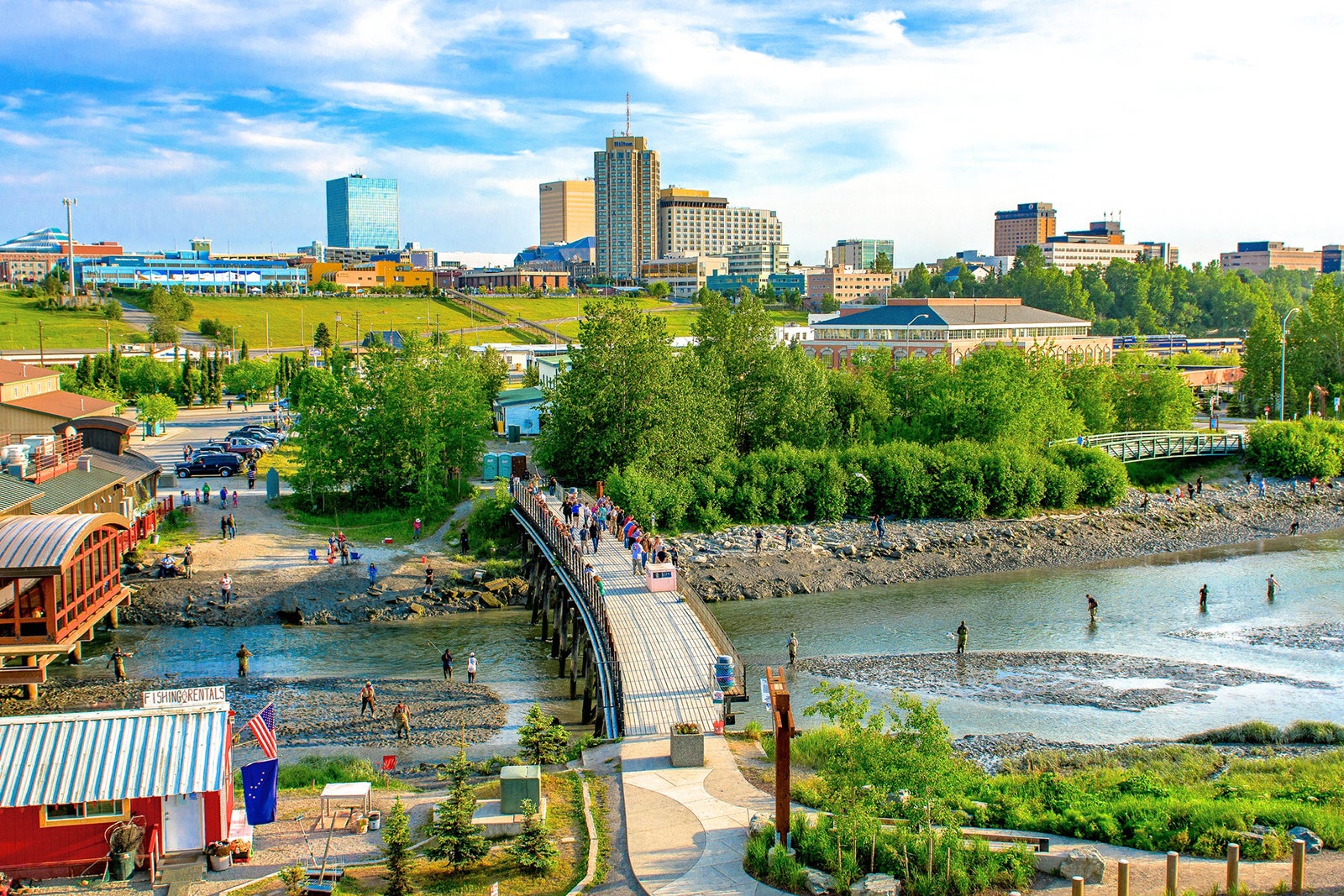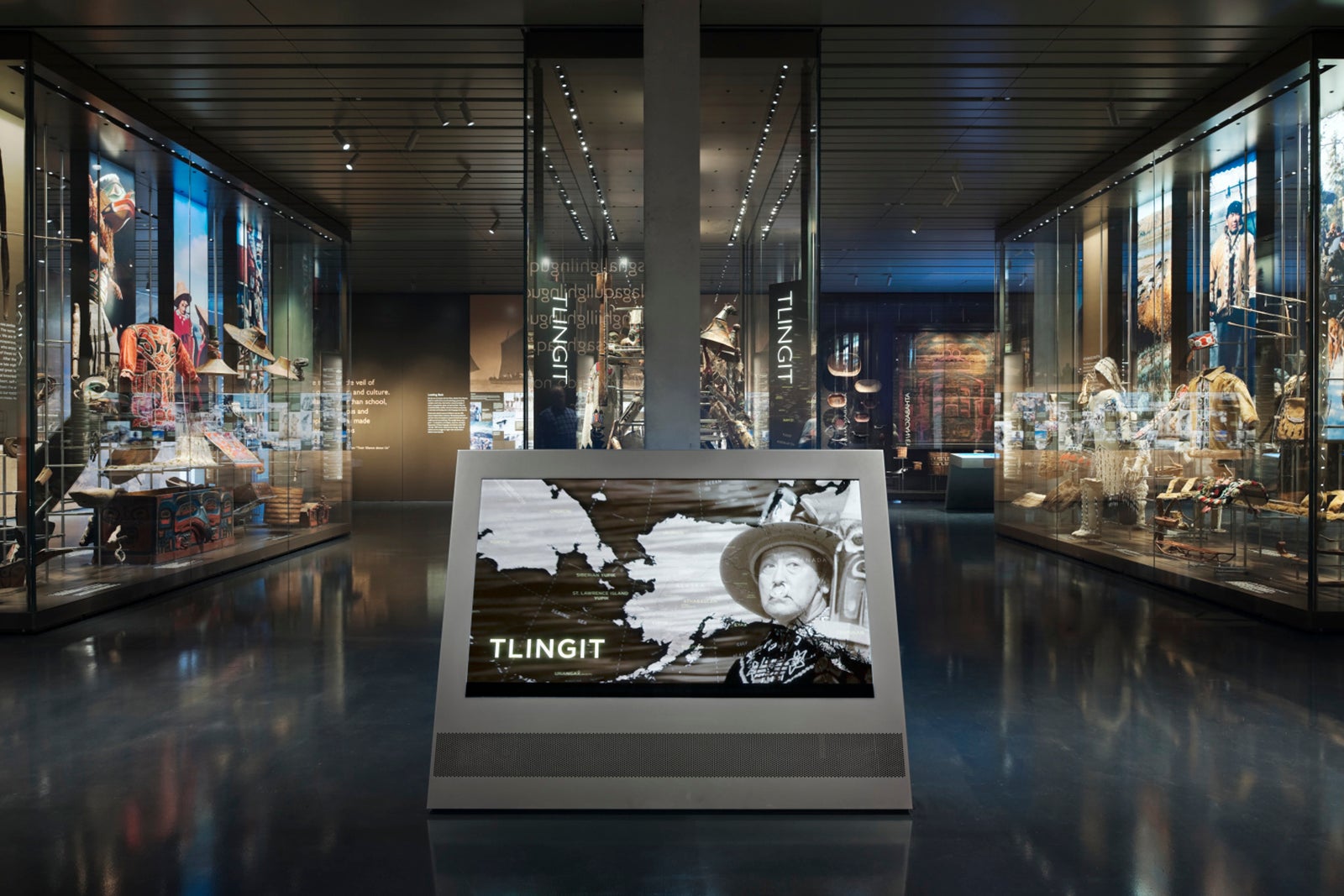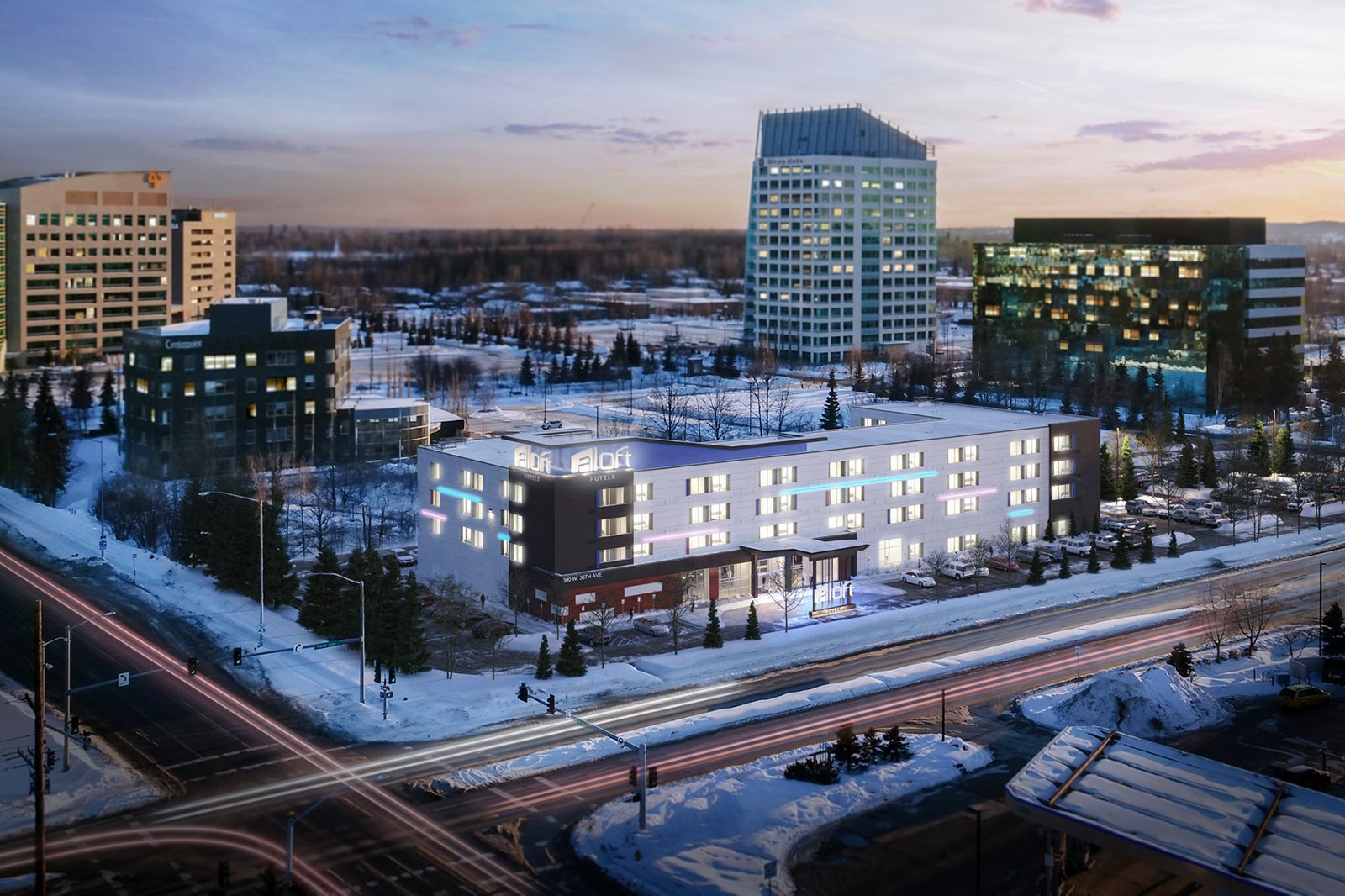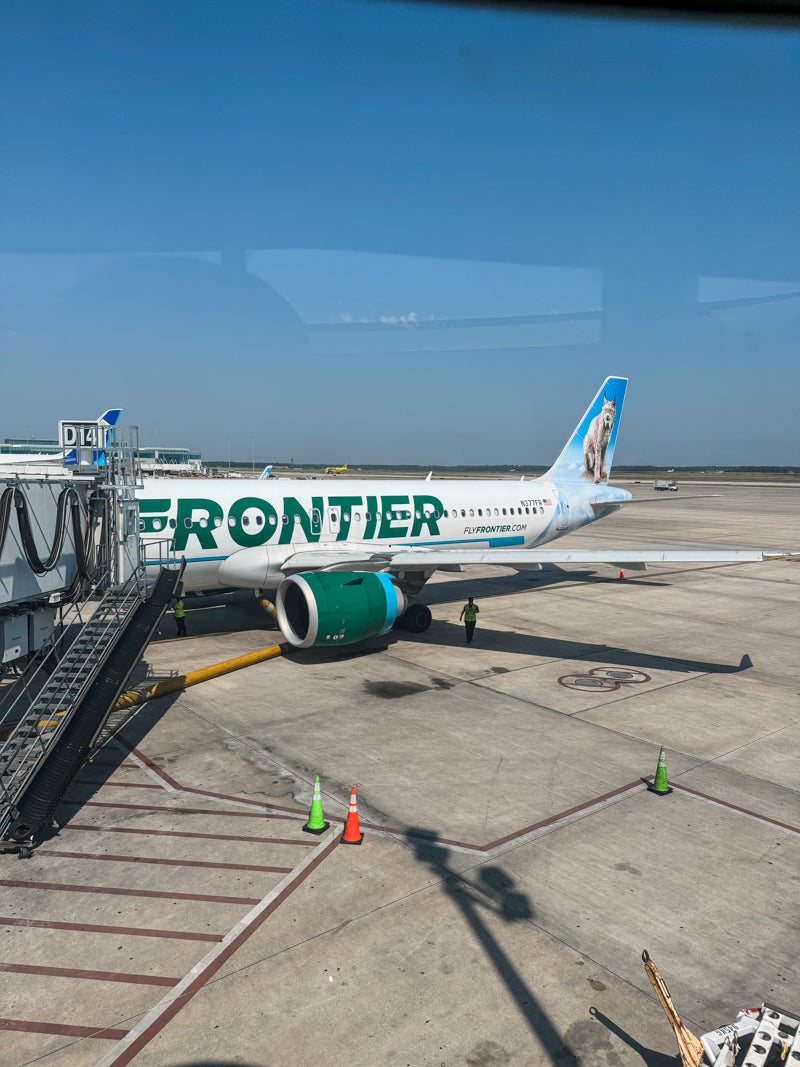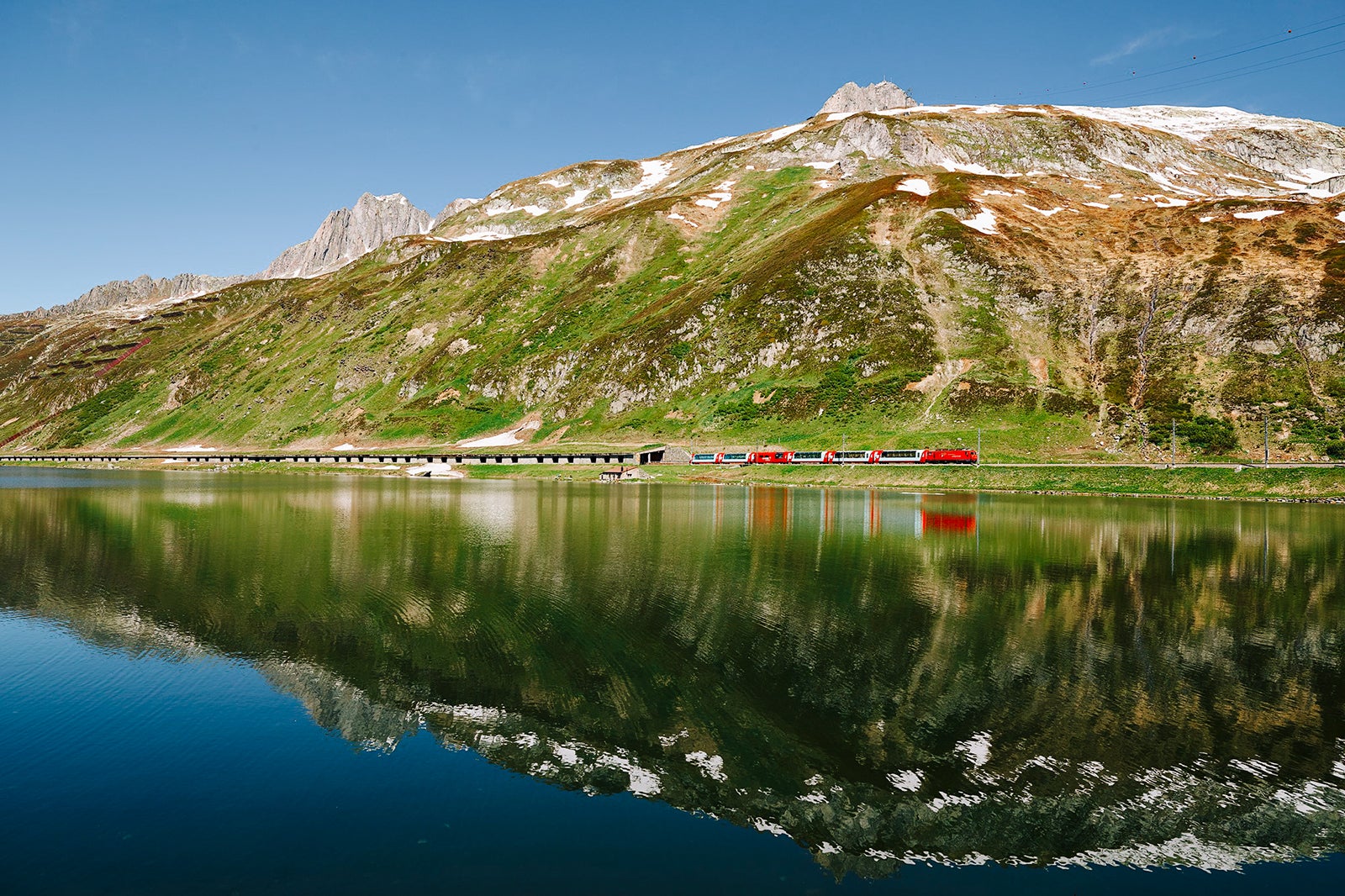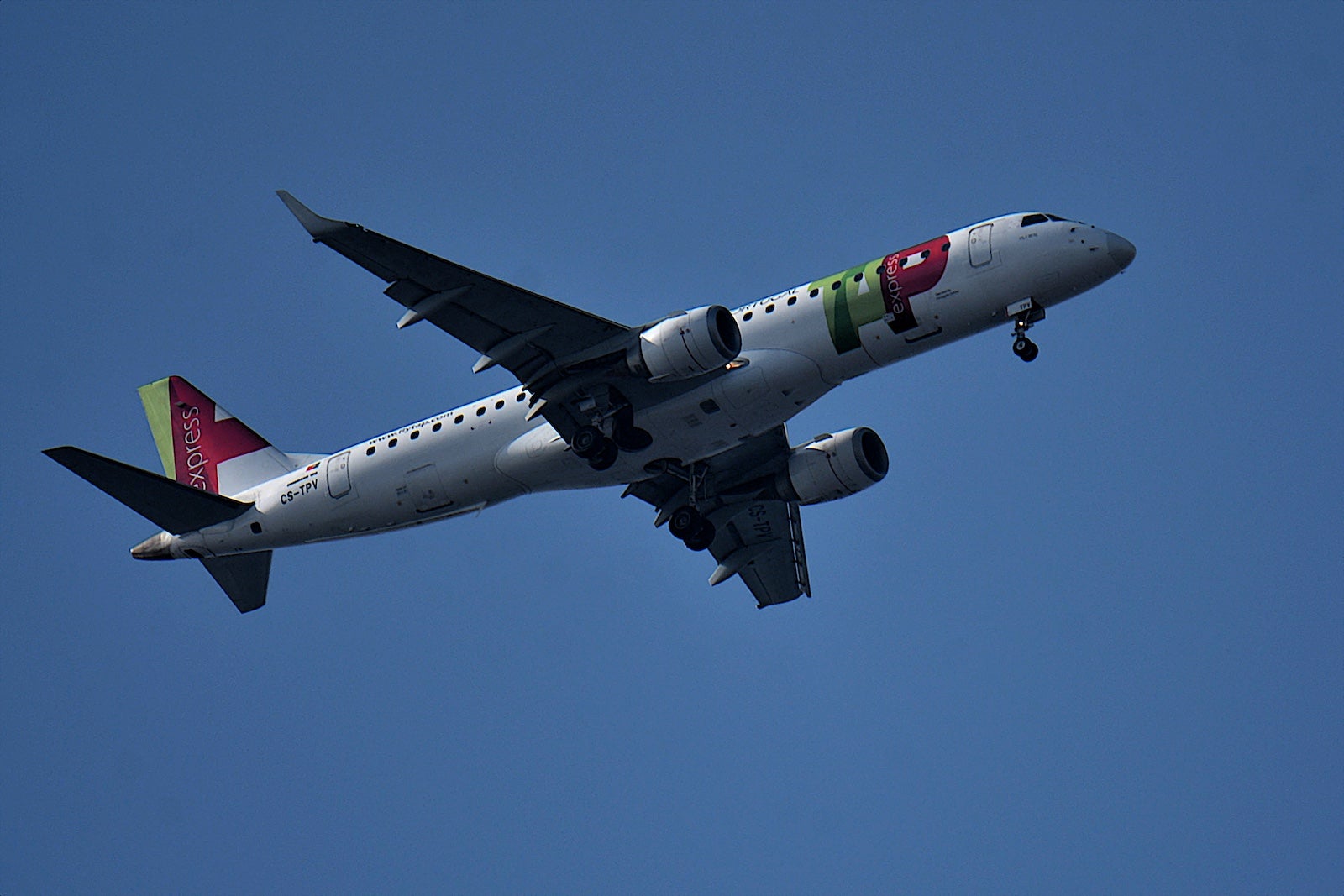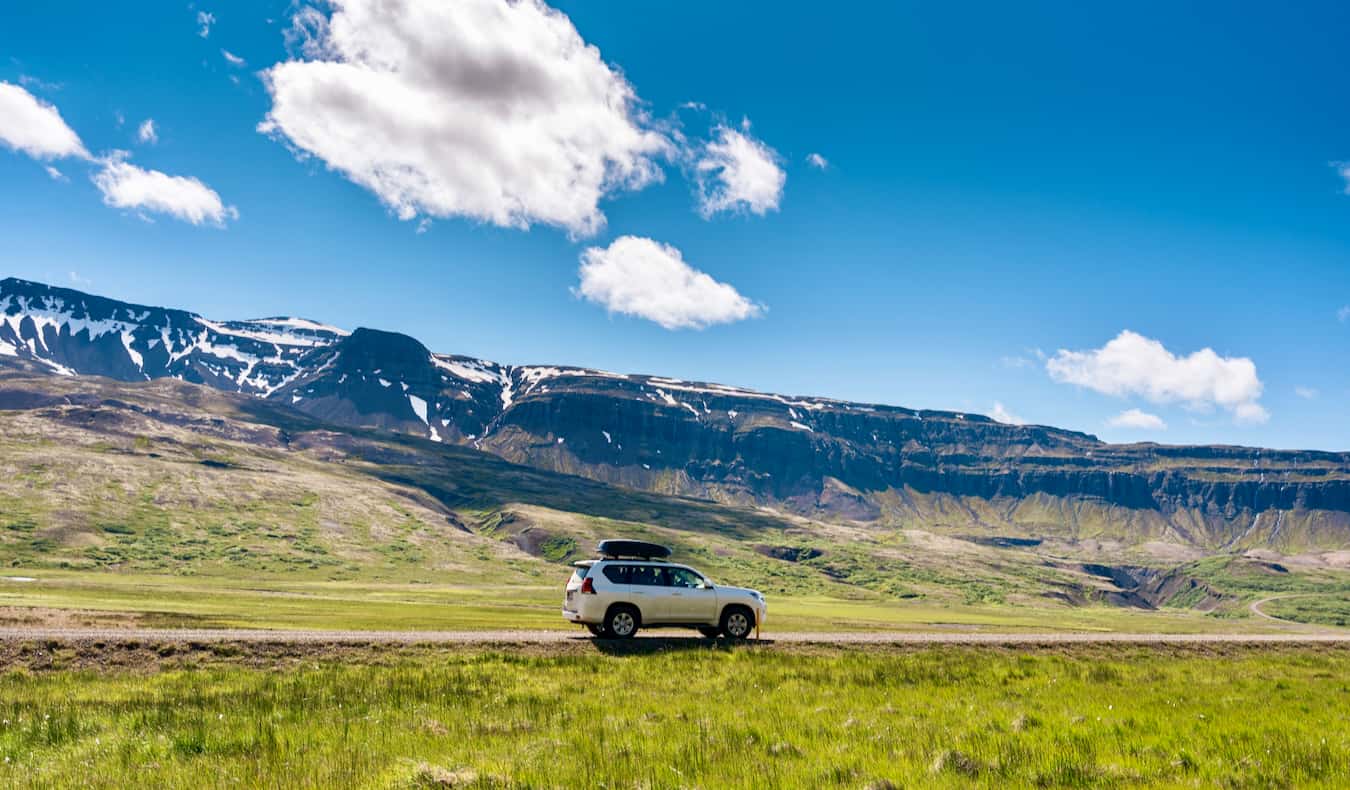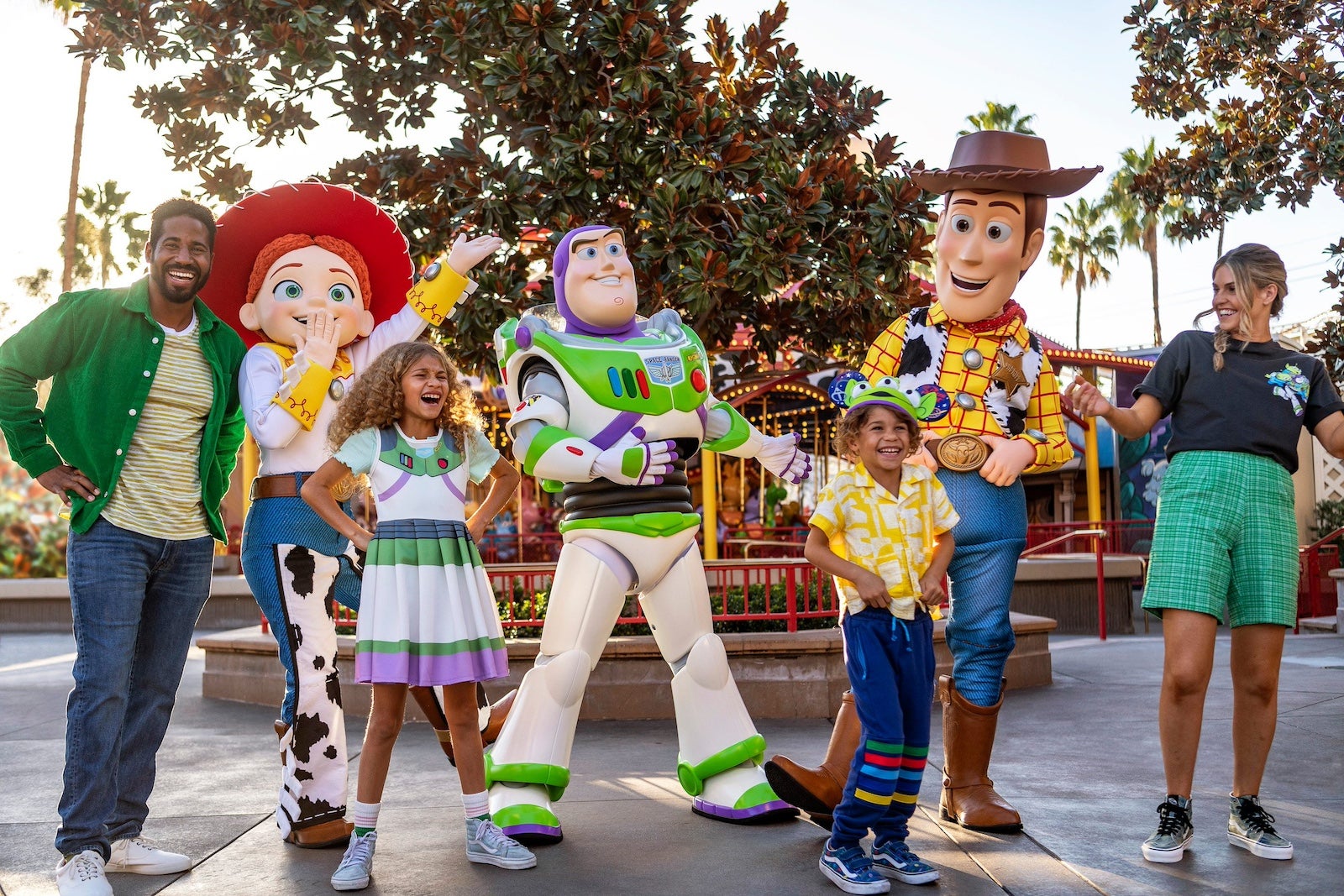An Anchorage-to-Fairbanks, Alaska, road trip itinerary
Most of Alaska can be rugged and impenetrable by car, but the 360-mile road trip between the state’s largest cities of Anchorage and Fairbanks is a breeze.
As you drive the well-maintained George Parks Highway, you’ll visit the breathtaking wilderness of Denali National Park — home to the highest mountain peak in North America — and the spirited small town of Talkeetna.
Fairbanks and Anchorage lay claim to a couple of the best museums in the state. Plus, they offer easy access to nature, whether your passion is hiking, kayaking, biking or fishing.
You can easily continue your journey south from Anchorage through the alluring natural scenery of the glacially sculpted Kenai Peninsula.
Southcentral Alaska road trip planning
The main stops on this scenic journey are at roughly two-hour intervals along two of the state’s principal thoroughfares: the George Parks Highway and the Glenn Highway (closer to Anchorage). The mostly two-lane (and four-lane in and around Fairbanks and Anchorage) roads are labeled Highway 3 and Highway 1, respectively, on maps. Alaskans never speak of highway route numbers, so refer to them by their proper names to avoid receiving blank stares from locals.
Although there are very few towns on the northern stretch of this route, you’ll rarely be more than 40 miles between gas stations. Keep your tank above a quarter full, and you’ll be fine. Wildlife, including moose and bears, are commonplace; stay alert, stick close to posted speed limits and heed “animal crossing” signs. Cell service is spotty north of Talkeetna, so download maps in advance.
Car rentals are expensive in Alaska during the high season (late spring to early fall). One-way, one-week rentals in Fairbanks and Anchorage start around $1,500. The price drops by as much as 50% if you pick up and drop off at the same location, so consider adding an extra day to this trip to return to where you started. Without stops, the drive between Anchorage and Fairbanks is six hours.
DIY versus an organized tour
For road trip fans, exploring Southcentral Alaska by car is a joy. You can go at your own pace, choose cozier and quirkier restaurants and accommodations, and pull off to snap a photo of a moose or bald eagle at whim.
The vast majority of visitors to this part of the state travel by way of a glass-domed or picture-window train tour on the scenic Alaska Railroad, a luxury motor coach tour or some combination of the two. All major cruise lines with itineraries that start or end in Whittier or Seward offer these as pre- or post-trip excursions, typically spanning two to five days.

Daily Newsletter
Reward your inbox with the TPG Daily newsletter
Join over 700,000 readers for breaking news, in-depth guides and exclusive deals from TPG’s experts
You can also book these trips directly through popular companies like Alaska Tours (from $1,759 per person, double occupancy, for five nights by motor coach and train) or directly through the Alaska Railroad. The latter offers several packages that cover Anchorage, Denali and Fairbanks, usually in combination with Seward or Whittier (from $3,795 per person, double occupancy, for seven nights by train).
Given the steep cost of rental cars and hotels in summer, you won’t save money traveling on your own versus taking a group tour. The prices are similar for comparable levels of comfort. But a do-it-yourself road trip is easy to plan thanks to this region’s tourism-friendly infrastructure. So, if you prefer the freedom of hitting the open road at your own pace, free from a group, an independent road trip is the right option.
Budgeting your time
At a brisk pace, you can see the major attractions on this trip in five days and four nights. For a more relaxing experience, allow a week.
Getting to Fairbanks or Anchorage
This itinerary begins in Fairbanks, the largest city in the upper half of the state. You could also drive it in reverse, beginning in Alaska’s largest metropolis, Anchorage.
Fairbanks International Airport (FAI) is served by most major airlines, with direct flights at least once daily from northern and western Lower 48 hubs. Ted Stevens Anchorage International Airport (ANC) offers many more flights and connections, including several direct international routes.
The best months to visit central Alaska
The best and only practical time period for this trip is mid-May through early October. There are great reasons to visit Fairbanks and Anchorage in winter — like seeing the northern lights and watching dog-sled races — but road-tripping isn’t one of them. Driving conditions can be hazardous during this time, and services in or near Denali National Park are extremely limited in winter.
You’ll encounter the biggest crowds and steepest hotel rates from mid-June through Labor Day, but this is also when you’re likely to experience the best weather. You’ll find partly sunny skies with some rain possible; temperatures are mild, with average highs in the 60s. Fairbanks in mid-June can be a lot of fun when you experience the true midnight sun. All summer, the region’s long days provide more time to hike and avoid driving in darkness.
Fairbanks to Denali National Park
Alaska’s second-largest city (with a population of around 32,000), Fairbanks is a friendly, slightly sprawling expanse of gently undulating woodland. It’s bisected by the snaking Chena and Tanana rivers. The city is about 120 miles south of the Arctic Circle, and it’s the first large community visitors reach when driving to Alaska from Canada via the legendary Alaska, or Alcan, Highway.
Visit the sleek, contemporary Morris Thompson Cultural & Visitors Center downtown. As with any visitor center, you can pick up brochures and ask the staff for sightseeing advice. However, the building also contains a superb (and free) museum about human and natural history. Walk through the series of life-size dioramas that touch on Native Alaskan culture, local flora and fauna and archaeology. Then, go outside to the walking path flanking the Chena River to snap a selfie beneath the Moose Antler Arch, fashioned from more than 100 antlers.
Then, stroll west along the river and then south a couple of blocks into the heart of downtown and grab breakfast or lunch at the locally beloved Crepery or dinner at refined Lavelle’s Bistro.
The city’s other must-see attraction is the Museum of the North, set in a striking, angular building on the hilltop flagship campus of the University of Alaska Fairbanks. The museum’s great draws are the natural history exhibits — which depict seals, caribou and a gruff-looking, nearly 9-foot-tall grizzly bear.
Don’t overlook the excellent gallery on the second level: It’s filled with works by generations of Alaskan artists. As you climb the staircase, behold the 42-foot-long skeleton of a bowhead whale on one side and the vast panoramas south toward the Tanana River Valley and Alaska Range through the window. The museum shop has an exceptional collection of Alaskan-made art and crafts.
For a different perspective on the landscape, book a three-hour narrated cruise on the Riverboat Discovery, a vintage stern-wheeler that plies the Tanana and Chena rivers. The Tanana Valley Farmers Market — open Wednesday and Saturday in summer — is worth a stop for its bounty of local foods and crafts.
The Fountainhead Antique Auto Museum also stands out. It holds more than 70 vehicles inside — many of them rare. They nearly all date to the pre-1940s and have been meticulously restored. Beside the cars is an equally impressive trove of period fashion, with photos of intrepid adventurers driving their early autos across the formidable Alaskan landscape, often through mountains of snow, on the walls. It’s inspiring material for your road trip through the Last Frontier.
The drive to Denali National Park is a straight shot about 120 miles down George Parks Highway. Immediately southwest out of town, the road climbs steadily into the hills before dipping about 60 miles later to cross a dramatic bridge over the Nenana River, where it enters the larger Tanana.
Pull off the highway for a quick look around Nenana village. Stop by the Historic Alaska Railroad Depot, walk along the river, and drop into rollicking old Moochers Bar for an Alaskan beer. It’s a little less than an hour from Denali.
Optional side trip to Chena Hot Springs
Before leaving Fairbanks for Denali, consider making this one-hour side excursion in the opposite direction. About 60 miles northeast, Chena Hot Springs Resort is a funky and remote 440-acre resort run entirely on renewable geothermal energy. It’s most popular for its indoor and outdoor soaking pools, and in winter, it’s a magical viewpoint for the northern lights. It’s a pleasure to soak in the two spring-fed pools, which maintain a temperature of 82 to 86 degrees.
At this tranquil property, you can explore the Aurora Ice Museum, book a sled-dog kennel tour or horseback ride, dine in the excellent geothermal greenhouse-to-table restaurant, sip appletinis out of ice goblets, and even spend the night in the simple but pleasant lodgings.
The drive here through mossy forests is super-relaxing until you spy a giant moose bathing in one of the roadside ponds. At this point, you’ll want to (carefully) pull over and snap some photos from a safe distance. The odds of seeing these towering ungulates increase early or late in the day as you pass through Chena River State Recreation Area, within about 15 miles of the resort.
Where to stay near Fairbanks
Wedgewood Resort (rates start at $279 per night) is a comfortable option, a short drive from downtown but with a quiet parklike setting. (Fountainhead Antique Auto Museum is on the grounds.)
Close to the airport and set along a pretty expanse of the Chena River, Pike’s Waterfront Lodge (rates start at $234 per night) has several distinctive amenities: an aromatherapy steam room and dry sauna, a theater showing films about the northern lights, a speakeasy-style billiards lounge and a very popular riverfront restaurant.
Chena Hot Springs Resort (rates start at $210 per night) has 86 hotel rooms, plus cabins and yurts. If you’re not in a rush, it’s worth spending a night here. The setting is magical.
Denali National Park to Talkeetna
As you approach Denali National Park from Fairbanks, you’ll first pass through Healy, a diminutive, laid-back town with several lodging options and restaurants. It’s far less commercial than the strip of eateries, tour businesses and hotels 10 miles farther south — just outside the park’s main entrance — known as “Glitter Gulch.”
Though convenient, Glitter Gulch teems with park visitors. However, it’s home to Prospector’s Pizzeria & Alehouse — a must-stop for outstanding pies piled with inventive ingredients and an exceptional list of Alaska craft beers.
Set aside a couple of days to explore Denali National Park. The vast majority of this 7,408-square-mile park is untrammeled wilderness, and there are just two ways to explore it in a vehicle.
The most popular way is to book a ride in one of the green school buses that plies Denali’s 92-mile park road. Alas, in 2021, the massive Pretty Rock Landslide washed out this gravel byway at mile 43. Until a mammoth rebuilding project is completed around summer 2026, buses can travel only as far as mile 43; the gorgeous and hugely popular Eielson Visitor Center (at mile 66) is closed.
Your other option is to drive into the park, but private autos are permitted only as far as mile 15 of the park road, at the Savage River picnic area. Still, given that the scenery along these first 15 miles is arguably even more beautiful than on the additional 28-mile stretch accessible to park buses, driving your car is arguably the more enjoyable option. You can go at your own pace, and you’re guaranteed a good view out your car window. Best of all, you don’t have to scramble for a seat on a crowded bus.
The parking lot at Savage River can fill up, however, so try to go when it’s less crowded (either early in the morning or late in the afternoon).
Whether you drive or take the bus, you should visit Savage River. From here, you can access two of the park’s best hiking trails. The easy 1.7-mile round-trip Savage River Loop Trail meanders through a breathtaking river valley. Departing from the same trailhead, the moderately challenging Savage Alpine Trail (4.2 miles one-way or 6.5 miles as a loop) climbs about 1,500 feet over a craggy, wildflower-strewn ridge with astounding views before descending to Savage River Campground. From here you can flag down a bus or walk along the Park Road the final 2.3 miles back to where you started.
During your visit, you may glimpse the park’s namesake 20,310-foot-tall peak. However, Denali has fickle weather, and the summit is often shrouded in clouds, even when it’s sunny at Savage River. The park is about more than just the mountain, though. Near the park entrance, there’s a lot to see around the main visitor center, including the sled-dog kennels at the park headquarters and several outstanding hikes. One of the best is the 4-mile round-trip jaunt to Horseshoe Lake.
For the most memorable views of the park, consider splurging on a flightseeing excursion. Several reputable outfitters offer this, like Healy-based Fly Denali and Talkeetna’s K2 Aviation, one of Alaska’s best and longest-running flightseeing companies.
K2’s one- to two-hour tours fly directly over the park’s awesome peaks and massive, blue-tinted glaciers, offering eye-popping, up-close views and (weather permitting) a great look at Denali Peak. For an extra charge, you can book a flight that lands on a glacier, where you can hop out for a quick walk.
To get to Talkeetna, it’s a 2.5-hour drive from Denali’s park entrance, south down George Parks Highway. The final 14 miles are a jag north on Talkeetna Spur Road.
Where to stay near Denali National Park
Avoid the crowds from bus and train tours and stay in one of the smaller, slightly off-the-beaten-path accommodations either north of the park in Healy or south of it around Carlo Creek.
A notable exception to this rule is Grande Denali Lodge (rates start at $369 per night). Although it’s in Glitter Gulch and is popular with groups, it has a spectacular setting high on a bluff. The lodge is situated away from road traffic and offers fantastic views of the park, including from the terrific Alpenglow restaurant.
About 15 miles south in Carlo Creek, McKinley Creekside Cabins (rates start at $289 per night) is a wonderfully relaxed little compound; it has a cute cafe and bakery and accommodations in 13 cabins and three larger vacation homes.
Talkeetna to Anchorage
Talkeetna has become a bit more discovered than when it inspired the town of Cicely in the hit ’90s TV show “Northern Exposure.” It’s still endearingly offbeat, though. Its vibe is inextricably linked with Denali National Park, as most who visit the park also spend time here. It’s also a popular stop on the Alaska Railroad; when trains come through, the town seems to quadruple in population.
It’s an excellent place to spend the night if you’re booking one of the town’s popular flightseeing tours of Denali, but it’s also just a picturesque little town with a fun personality. Also, you stand a better chance of seeing Denali’s peak from Talkeetna than you do from the section of Denali National Park nearest to its entrance. Talkeetna Riverfront Park, at the west end of Main Street, is one of the best spots to take in the view.
The town also has an atmospheric 1920s general store, Nagley’s, which is the residence of Talkeetna’s feline mayor, Denali. (Denali replaced the former mayor, an internationally famous orange manx mix named Stubbs, who passed away in 2017 at age 20.) Talkeetna also has a small but impressive selection of galleries and restaurants. Good bets for a bite to eat include Denali Brewpub for its spacious deck and Homestead Kitchen for its mix of Southern- and Alaska-inspired dishes.
Mat-Su Valley
From Talkeetna, after returning to Parks Highway, it’s a straightforward drive to Anchorage. It takes about two hours without stops, but there are a few interesting spots to check out en route in the Mat-Su (short for Matanuska-Susitna) Valley. You’ll enter the valley about an hour after leaving Talkeetna.
This region is somewhat suburban, especially sprawling Wasilla, which became instantly infamous when John McCain tapped its former mayor and then-Alaska governor Sarah Palin to be his running mate during the 2008 presidential election.
Interesting stops include the Museum of Alaska Transportation Industry and Palmer — a short way up the Glenn Highway past the fork leading to Anchorage. This historic town hosts the Alaska State Fair in late August, which is famous for its humongous produce. (We’re talking 138-pound cabbages and 2,000-pound pumpkins.) Alaska’s long summer days result in a short but impressive growing season.
Palmer is also home to the Musk Ox Farm, a wonderful nonprofit where you can book a guided “oxperience” to see these gentle and furry Ice Age mammals up close. The Vagabond Blues Coffee House and Palmer Ale House are appealing lunch stops.
Where to stay near Talkeetna
Steps from shops and cafes, Talkeetna Cabins (rates start at $285 per night) is a dapper little complex comprising four modern log cabins and a three-bedroom log house set around a lawn. Each comes with a full kitchen.
It’s a few minutes from town and lacks the area’s historic funkiness, but Talkeetna Alaskan Lodge (rates start at $299 per night) offers a nice range of creature comforts after a day of driving or hiking (or bouncing around in a tiny flightseeing plane). The property’s 212 upscale rooms are set among several buildings. Amenities include multiple restaurants, a gym and a back terrace on a bluff with postcard-worthy views of Denali.
Exploring Anchorage
Home to nearly 40% of Alaska’s 733,000 residents, Anchorage ranges across nearly 2,000 square miles — an area larger than Rhode Island. With its big-box stores and wide, well-maintained roads, the city can feel oddly familiar and even a bit tame at first. But make no mistake: It’s surrounded by rugged wilderness, from the craggy peaks of the immense Chugach Mountain range to the vast waters of Cook Inlet and its Knik and Turnagain arms.
Anchorage is an excellent base for hiking, kayaking, mountain biking and skiing day trips. It’s a gateway to the pristine rivers and fjords of the Kenai Peninsula and has a diverse restaurant scene. It’s also home to a pair of the state’s most impressive cultural attractions: the Alaska Native Heritage Center and the Anchorage Museum.
From Mat-Su Valley, you’ll reach the turnoff for the Alaska Native Heritage Center on your way into the city. Opened in 1999, this 26-acre, wooded campus is Indigenous-operated and comprises six village settings that interpret the cultures of the state’s 11 Native groups.
Time your visit to watch the engaging demonstrations of traditional games and dances in the central hall. Then, explore the outdoor villages. They are set around a lake and offer the opportunity to converse with tribal members, view crafts demonstrations and listen to stories.
Continue into downtown Anchorage and walk around Town Square Park and along Fourth and Fifth avenues. Pick up a snack from one of the reindeer hot dog carts or have dinner at the trendy restaurant Whiskey & Ramen.
Architecturally, the city is a mishmash. Nearly all of its buildings were constructed after 1964, when the Good Friday Earthquake (which had a devastating magnitude of 9.2) virtually leveled it. The Anchorage Museum occupies a striking glass structure and requires at least two hours to fully explore. It contains the engrossing Smithsonian Arctic Studies Center gallery; it showcases more than 600 Native Alaskan artifacts, including fishing and hunting tools, clothing, masks and wood carvings.
There’s also the first-rate Art of the North gallery, a comprehensive Alaska history exhibit, an interactive science and technology center with a planetarium, an always-compelling array of rotating exhibits and an excellent restaurant.
Beyond downtown, two adjacent neighborhoods, Midtown and Spenard, contain many of Anchorage’s best restaurants. In the former, duck into Kinley’s for inventive modern American fare and Moose’s Tooth Pub & Pizzeria for great people-watching.
Spenard notables include Spenard Roadhouse, with its elevated gastropub fare, and Pho Lena, which serves excellent Laotian and Thai food in a modest building that once clearly held a Pizza Hut.
Take in a dramatic view of the city and surrounding Cook Inlet with a climb up to the top of Flattop Mountain, said to be the most climbed peak in Alaska. Although the trail is just 1.5 miles each way, you’ll gain about 1,500 feet in elevation.
Where to stay in Anchorage
Within walking distance of many restaurants and attractions, the upscale Marriott Anchorage Downtown (rates start at $391 per night or 43,000 Marriott Bonvoy points per night) rises 20 stories. Rooms on the upper floors have fantastic views of the water and mountains.
In Midtown, Aloft Anchorage is a great choice for road-trippers as it offers free parking and easy access to major roads (rates start at $256 per night or 32,000 Marriott Bonvoy points per night). It’s a gleaming four-story property with nice views of the Chugach Range and an inviting lobby bar, a well-equipped fitness room and one of the nicer indoor hotel pools in town.
Related reading:

